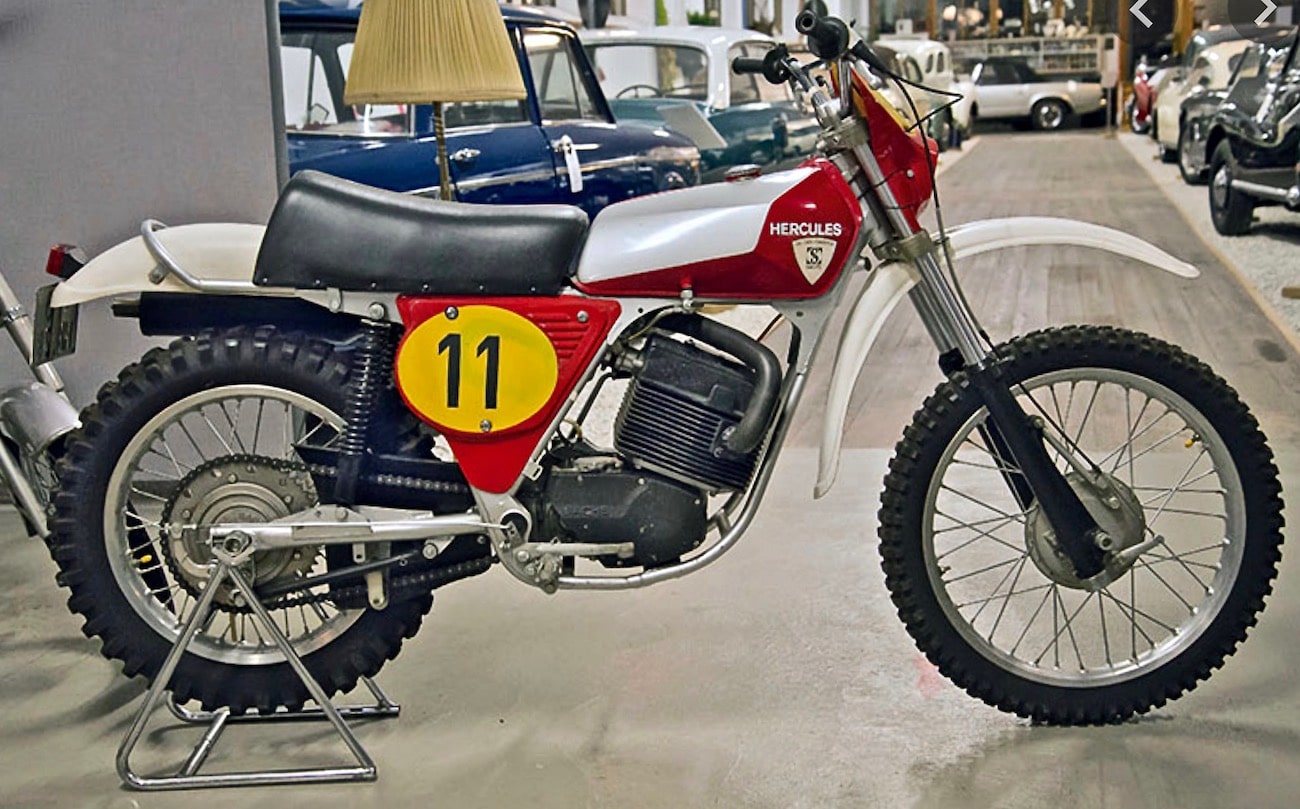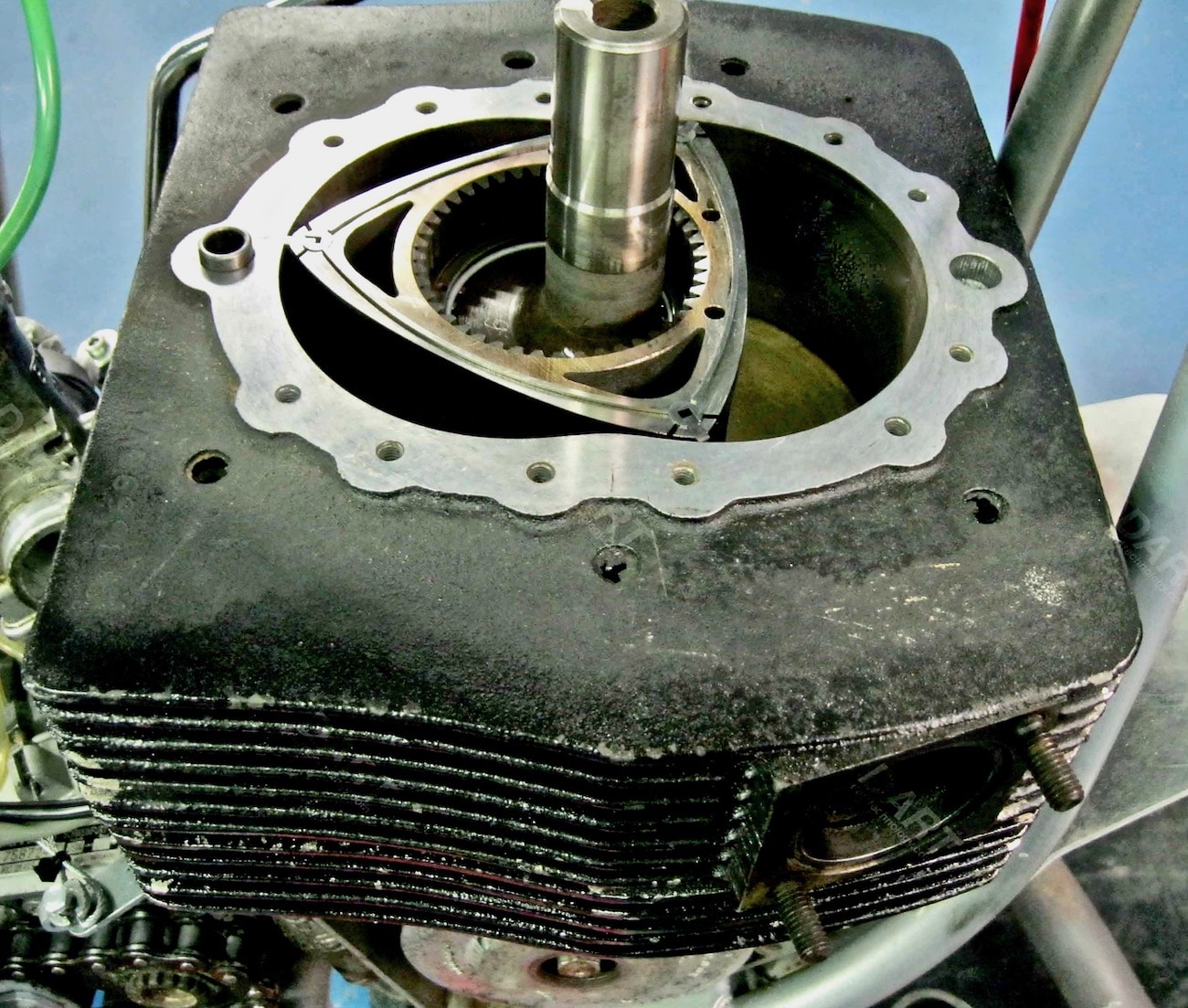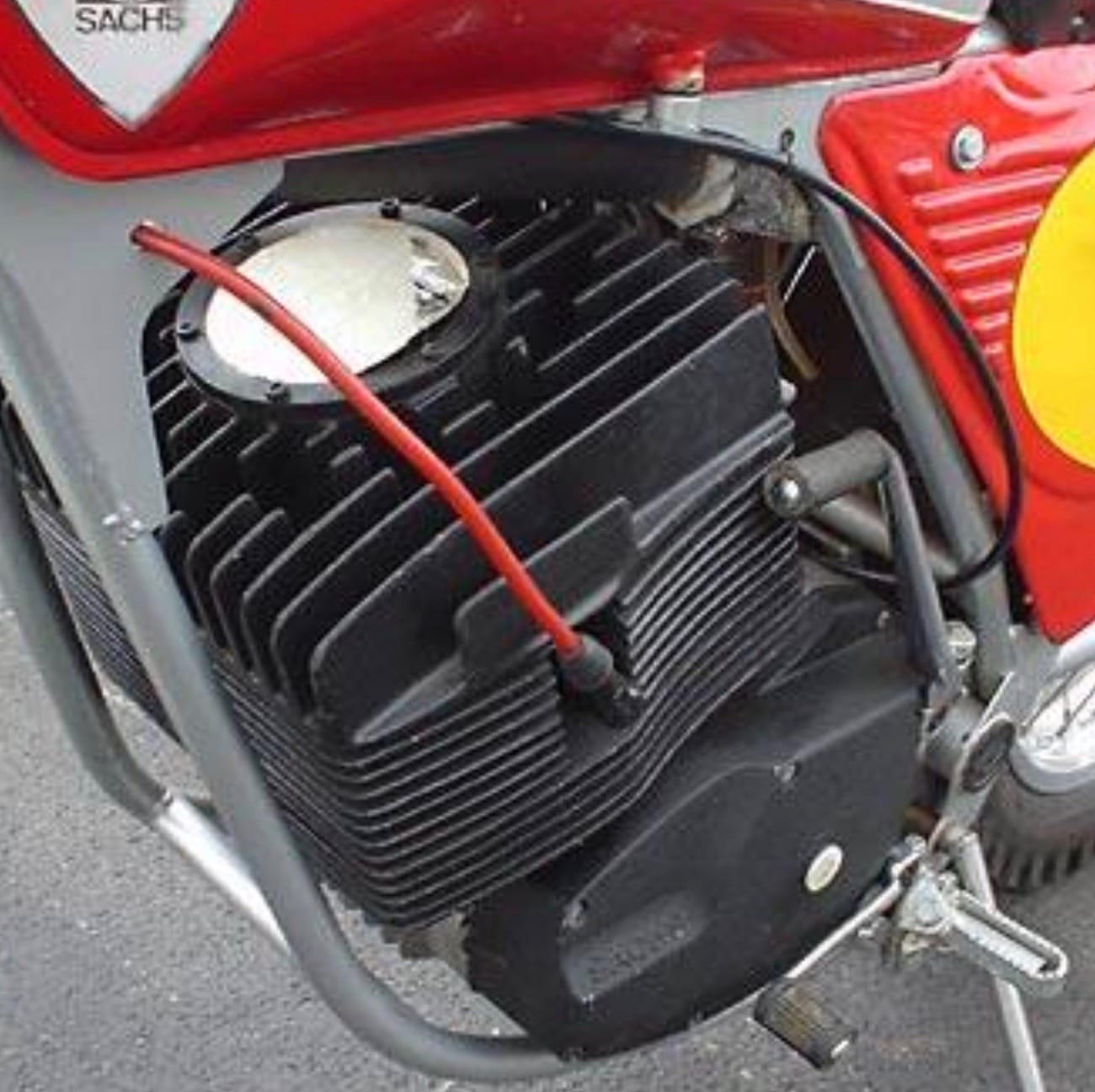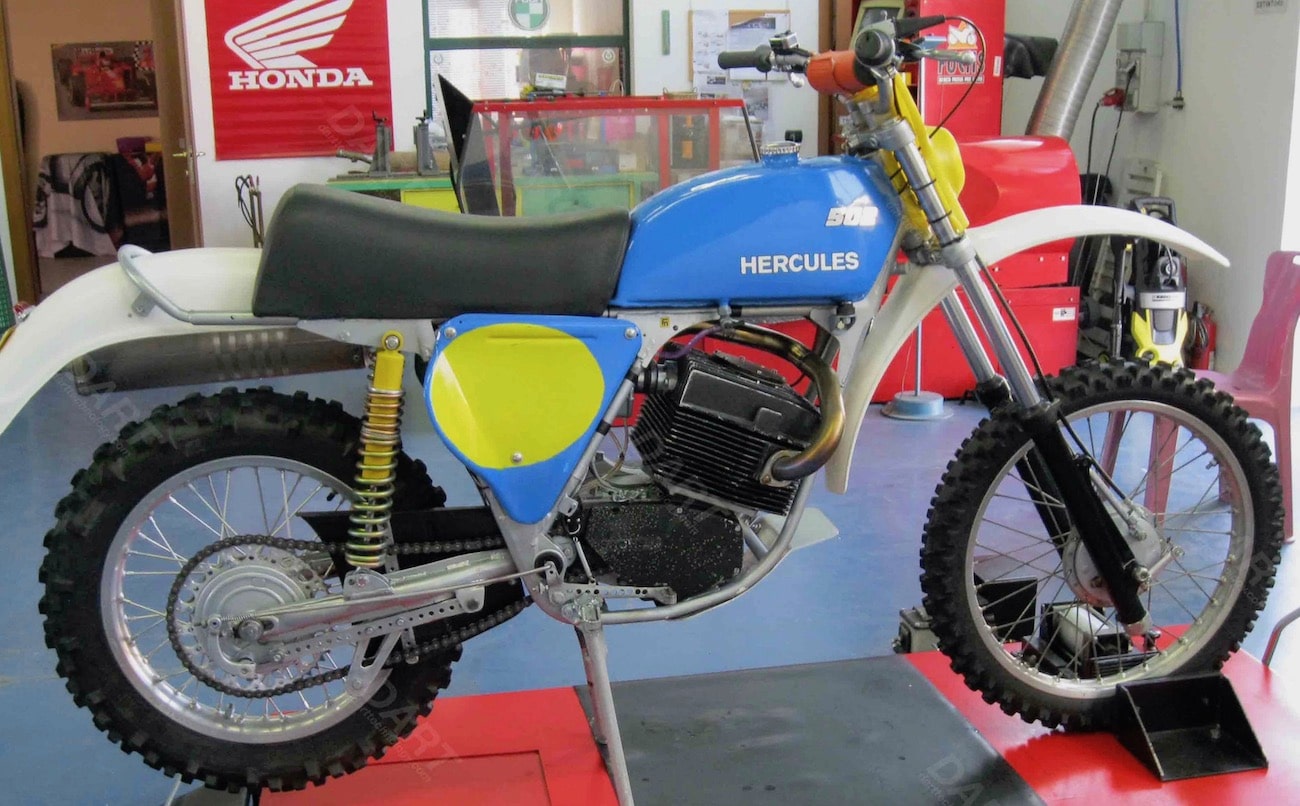BIKES YOU’VE NEVER SEEN BEFORE: HERCULES WANKEL 502 ROTARY
 The 1974 Hercules W-2000 used a Sachs-sourced Wankel, single-rotor, rotary engine.
The 1974 Hercules W-2000 used a Sachs-sourced Wankel, single-rotor, rotary engine.
Felix Wankel (born 1902 in Lahr, Germany) had the vision for his remarkable rotary engine at the age of 17 and began working on prototypes 5 years later. He gained his first patent for his engine in 1929, but it wasn’t until 1957, working in conjunction with NSU, that he had a fully functioning rotary engine prototype, and immediately began licensing the engine, which had many theoretical advantages over a typical piston engine. The first motorcycle applications for this promising engine appeared shortly after the first rotary-powered automobiles, the Mazda Cosmo and NSU Spider were introduced in 1964.
 Instead of the piston going up and down, the Wankel’s triangle-shaped rotor spun on a vertical crankshaft. It had separate intake, combustion and exhaust cavities.
Instead of the piston going up and down, the Wankel’s triangle-shaped rotor spun on a vertical crankshaft. It had separate intake, combustion and exhaust cavities.
A rotary engine has no piston chugging up and down. Instead a rounded triangular rotor spins around a shaft through the crankshaft’s hollow barrel. Fuel and air are pumped into the spaces between the rotor and the rapid expansion of exploding gases spins the rotor, thus generating power. Think of the rotor as though it is a piston with fewer parts and spinning instead of circulating up and down. The most famous rotary engine was the 1978 to 2002 Mazda RX-7.
 The head does not contain a combustion chamber, but instead seals off the rotor. The plate on top of the engine provides accesses to the top crankshaft bearing.
The head does not contain a combustion chamber, but instead seals off the rotor. The plate on top of the engine provides accesses to the top crankshaft bearing.
The first two-wheeled mass-production of the Wankel engine was the ‘Hercules’ W-2000 of 1974, with a 294cc air-cooled engine with a single-rotor, which had previously been used in a snowmobile. The prototype machine used a BMW R26 gearbox and shaft drive, but production W-2000s used a 5-speed gearbox and chain final drive. The 1974 to 1976 Suzuki RE-5 Water Buffalo also used a Wankel engine (although the design was changed over the years to the point that very little of it owed allegiance to Felix Wankel).
 The 1976 Hercules 502 GS was also offered as a Penton model—in very limited numbers.
The 1976 Hercules 502 GS was also offered as a Penton model—in very limited numbers.
The Hercules was the first production motorcycle using a Wankel motor. The first models used a two-stroke mix in the gasoline to lubricate the engine, which was later upgraded to an oil injector. About 1800 were sold under both Hercules and DKW badges between 1974 to 1976. In 1977 they sold all their production tooling to Norton.
 The exhaust port is on the right-hand one-third of the rotor chamber. The pipe goes up and over and exits on the left side of the bike.
The exhaust port is on the right-hand one-third of the rotor chamber. The pipe goes up and over and exits on the left side of the bike.
Hercules built a few off-road Wankel-engined motocrosser, for the ISDT and for their US importer Penton Motors. A few of these showed up in the USA, but they are very rare. The crankshaft was mounted nearly vertical, presumably to give a shorter wheelbase and better cooling, and while the engine might look like a traditional two-stroke, a close look reveals that it is a Wankel.
 Only 1800 of the Wankel powered dirt bike were made. Consumers were leery of the strange engine and high price tag. This is rare limited-production Hercules Wankel MX bike, as sold through US distributor Penton Motors circa 1975.
Only 1800 of the Wankel powered dirt bike were made. Consumers were leery of the strange engine and high price tag. This is rare limited-production Hercules Wankel MX bike, as sold through US distributor Penton Motors circa 1975.
Photos: Paul d’Orléans, Paul Roach






Comments are closed.